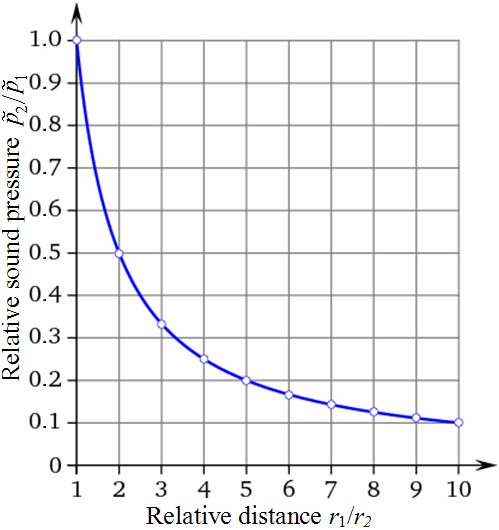In those long, dark nights of the soul, one can thrash furiously in one's bed, wondering furiously whether one's worldview is simply the product of one's political leanings, itself generated by a hazy combination of neurological and psychological leanings.
Do I think what I think because the current body of evidence deems it so, or are my thoughts, beliefs and actions entirely subject to the arbitrary, subjective schema that form the bulk of my mind?
It's nice, occasionally, to have someone else check the validity of your position. It's also nice to know that they're free of any vested interests, so you can be fairly sure that they're not subject to the same biases you are.
Recently, Senators John Madigan and Nick Xenophon brought a bill before the parliament, called the 'Renewable Energy (Electricity) Amendment - (Excessive Noise from Wind Farms) Bill 2012'. Both active campaigners against the development of wind farms, they have eagerly adopted the claims of the anti-wind lobby. The claim that sound emissions from wind farms, in a range of audible and inaudible frequencies, have serious detrimental health effects on nearby residents has played a key role.
The report was released yesterday evening. In its entirety, it's fascinating reading. Here are a few extracts, focusing on the 'Health' section of the report.
The number of complaints
The anti-wind lobby are eager to present an over-inflated impression of public dissatisfaction. The report quotes the Waubra Foundation:
"over 40 families from Queensland, New South Wales, Victoria and South Australia who have left their homes because of excessive noise from the wind turbines near their former homes, and the consequent serious health problems they experienced."
The committee simply points out some figures, putting Waubra's statements in perspective:
"Given that as of April 2012 there were approximately 1345 turbines operating in 59 facilities around Australia,10 the numbers expressing concern appear small compared to the numbers of residents near these turbines."
They also point out something incredibly obvious, yet, this concept had not yet occurred to me:
"The committee received just over 160 submissions, of which a little under 140 supported the bill and/or expressed concern about noise effects. Of these, the majority were from people worried about whether they might experience noise or health effects from proposed wind farms, rather than from people who claimed to have actually experienced annoyance or other adverse effects. The submissions related to a minority of Australia's wind farm operations."
Yep. The majority of people complaining were facing proposed developments, and did not actually live near operational wind farms. This highlights an extremely important factor in the modus operandi of the anti-wind lobby - they focus their efforts on stifling development, rather than stirring discontent for operational wind farms.
Committee view:
"The number of health-related complaints about wind farms is small in proportion to the number of people living near these facilities. The numbers also vary greatly from one facility to the next, for reasons not apparently related to the number of residents in the area."
They then go on to state that though the number is small, the nature/cause should be taken seriously. This is the basis for the next two sections.
Audible Sound
It's good that the committee distinguishes between audibly perceived sound, and infrasonic, inaudible sound. One (particularly nasty) tactic of the anti-wind lobby is to intentionally conflate the two. Confusion and ambiguity are their stock-in-trade.
Obviously, the increasingly famous papers, published by Sheperd et al (New Zealand) and Nissenbaum (US) were referenced. These two papers attempt to quantify the effects of wind turbine noise on certain measures of health, and were both published in peer-reviewed publications. It's clear the committee actually read the papers, which is a refreshing change from most journalism covering the research:
"The study by Nissenbaum and others included 38 respondents near two wind farms, and 41 respondents in a control group, with results that increased daytime sleepiness and reduced sleep quality was reported among those closer to turbines though, counter-intuitively, there was no difference in the use of sleep medications as a result."
They point out what I feel is the most telling flaw in the studies; namely that the papers do not discuss the variety of causes that could have returned the results they recorded. Professor Chapman is quoted:
"Both of those studies suffer from the same problem. That is that there has been considerable activity, in both regions studied in those two papers, of anti-wind-turbine activity."
In the end, the committee is quite blunt about the possibilities raised by the submissions:
Committee view:
"There is limited, and contested, published evidence that wind farm noise may be associated with annoyance and sleep disturbance in some individuals, but the causes are not clear"
Importantly, they recognise the caution that must be deployed when considering research - no scientific field has been free of research that is of poor quality. The papers by Nissenbaum and Sheperd possess their fair share of methodological and scientific flaws.
Infrasound
Though the bill boasts the phrase 'excessive noise' as part of its title, the main body of submissions focused instead on sound in the inaudible frequency range:
"most inquiry participants appeared to refer not to normal audible noise issues, but to possible health effects from low frequency sound, or infrasound."
Dr Peter Trask, a psychologist working in Bendigo, summarises the bare bones of the argument used by the anti-wind lobby:
"While this low frequency noise or sound energy (aka infrasound) may be inaudible and thus not able to be consciously perceived by the human ear, it does appear that the ear's vestibular system is still capable of perceiving the presence of this infrasound, and so send signals to the central nervous system for processing, in this case without the conscious awareness of the affected individual."
This pathway was first imagined by the revolutionary Dr Nina Pierpont. Professor Alec Salt, in the Depertment of Otolaryngology at Washington University School of Medicine, now sits as the primary proponent of this hypothesis, and unsurprisingly, had a prominent showing at the inquiry:
"So, the ear is extremely sensitive and responds very strongly to infrasound stimuli"
Say Salt, as part of his interview with the committee. Geoffrey Leventhall, an experienced consultant in noise vibration and acoustics, is quoted in the report summarising the issue neatly:
"There is no mystery about infrasound, but it has been falsely used by those opposed to wind turbines in order to alarm others, and also as a distraction, which they know will be difficult and time consuming to work on, whilst at the same time they ask for a moratorium on further constructions until the work is done"
Sarah Laurie, 'Medical Director' of the Waubra foundation and a key player in the anti-wind lobby's focus on purported health effects, often cites a report published in 2003 for DEFRA, for which Leventhall was a key author. However, the committee points out that:
"the 2003 report does not appear relevant to wind turbine noise"
Laurie also refers to a report published in 2001, named 'Infrasound Brief Review of Toxicological Literature'. The study is likely chosen for its ominous title, rather than its content,. Leventhall notes that:
"that review in fact only showed health effects from low frequency sounds at levels typically around one million times higher than those generally involved in the case of wind farm noise."
The committee then points out another study instance by the Waubra Foundation that involves "levels several orders of magnitude higher than those involved in wind farms". It is refreshing to note that this tactic of active misrepresentation did not pass by the committee unnoticed. The key counter to Laurie's assertions is simply that the infrasonic emissions from wind turbines are both non-harmful, and unremarkable, as explained by Dr Peter Seligman:
"My first comment is that the environment is awash with infrasound, which is both from natural and man-made sources and which is often far in excess of what is produced by wind farms."
If wind turbines really don't cause direct physiological harm, why the reports of health effects? The committee explores this in the next section.
Psychogenesis and the Nocebo Effect
An important and significant new study, accepted, peer-reviewed and due for publication in the journal 'Health Psychology', was referred to by the committee. The study used real and 'sham' infrasound to demonstrate that expectations of harm can lead to reports of ill effects:
"Conclusion: Healthy volunteers, when given information about the expected physiological effect of infrasound, reported symptoms which aligned with that information, during exposure to both infrasound and sham infrasound.
Symptom expectations were created by viewing information readily available on the internet, indicating the potential for symptom expectations to be created outside of the laboratory, in real world settings. Results suggest psychological expectations could explain the link between wind turbine exposure and health complaints."
The committee notes that the submissions provide (unintended) support for the noecbo hypothesis - here is one example they give, which neatly demonstrates that complainants express tellingly informed expectations of harm:
"I will be close to proposed wind development if it is built, and don’t want to be getting sick in my own home and unable to sleep just like the people at Waubra who came and told me about their situation."
The unbridled inventiveness of the symptoms and range of wind turbine syndrome are both recognised by the committee as further evidence that the symptoms may have psychological, rather than physiological underpinnings. As the committee reiterates:
"Anecdotal evidence submitted to the committee includes symptoms being associated with phenomena other than wind farms, symptoms not occurring coincident with the start of wind farm operation, not being related to whether there is wind blowing, or being at distances far greater than those usually reported"
The committee delivers an emphatic and strongly worded conclusion:
"The committee concludes that, while it is possible that the human body may detect infrasound in several ways, there is no evidence to suggest that inaudible infrasound (either from wind turbines or other sources) is creating health problems.
In contrast, there is an established literature confirming the existence of psychogenic, or nocebo, effects in general, and at least one study suggesting they may be responsible for symptoms in some wind turbine cases."
Similar to nearly all other governmental and legal proceedings clearing wind turbines of physiologically induced health effects, the content of this report is likely to be quoted out of context, and nearly always without reference to the original documents.
This will be done in the realm of forums in which the anti-wind lobby are not required to provide citations for their claims, or exercise reason and logic in their conclusions. The key point of affect remains, for them, the hostile community gathering, not the measured parliamentary review.
The onus now lies on members of the wind industry to properly understand, and eagerly disseminate the logical prowess contained within this report, and to do it in a way that is significantly more interesting than the fictional narrative presented by anti-wind lobby groups.
Meanwhile, I feel I might sleep slightly better. Only slightly, though.












